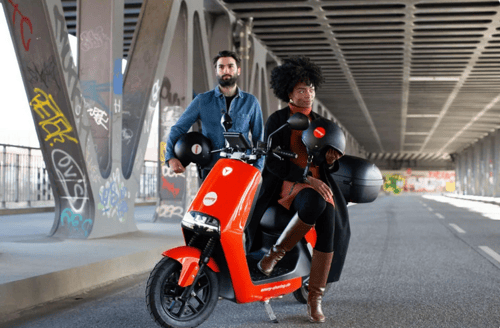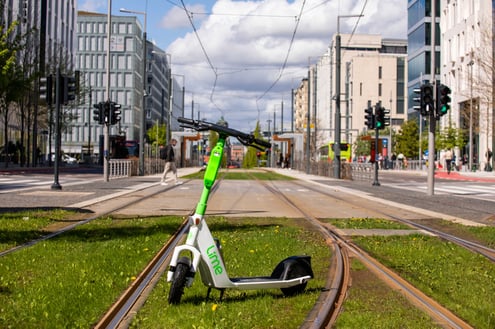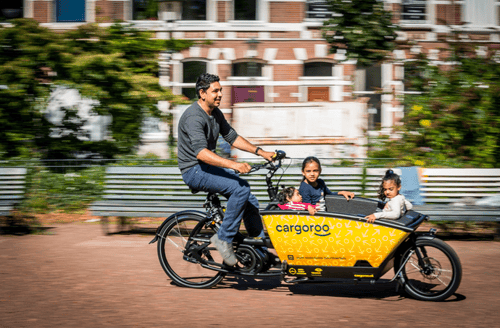Shared mobility: Disrupting the status quo
Everything was going so well for the shared mobility sector. Only a few short years ago it was identified as being one of the disruptors in the mobility sector, a subsector to keep our collective and individual eyes on. ZipCar were one of the major players that were helping to push the phrase “car-sharing” into common parlance, bicycle sharing schemes were taking off in major cities and ride-sharing initiatives were springing up on an almost daily basis across the world. What could stop the concept of shared mobility from becoming utterly commonplace in our everyday lives?
Shared mobility and Covid-19
There’s a simple answer to that question: Covid-19. A global pandemic where the concept of touching public things such as door handles was suddenly an activity that was fraught with potentially life-threatening danger was, pardon the understatement, the last thing that the burgeoning shared mobility industry needed. How then, 16 months on and with large parts of the world still in thrall to the virus, have the shared transport innovators coped, and in many cases, done a lot more than cope – they’ve thrived, as Paul Rooijmans of European mobility solutions provider Tranzer explains later in this article. But what of some of the other players in the shared mobility game - how do they see the near future shaping up and how has Covid affected their business and the very notion of sharing vehicles?
Marius Koch of Wunder Mobility, the German shared mobility software innovators that have recently launched a lending division to financially boost the micromobility sector, says: “Providers of shared mobility solutions have revised and improved their hygiene and safety protocols. This has led to a new leap in quality that many customers have come to appreciate as they switched to a single occupancy transport mode that reduces the risk of infection with Covid. Under the new conditions for many, a shared car, shared bike, e-moped, or e-scooter has become a real alternative to their own vehicle.”
"Despite a temporary return to the private car during Covid-19, the compelling need for people to interact has driven significant increases in other transport modes, such as micromobility."
John Nuutinen, CEO of Sydney-based SkedGo, provider of personalised trip planning, MaaS and shared and corporate mobility solutions, says that the outlook is, in fact, remarkably positive and upbeat:“Despite a temporary return to the private car during Covid-19, the compelling need for people to interact has driven significant increases in other transport modes, such as micromobility. Scooters and bicycles, whether they’re docked, free-range, electronic or old-fashioned crank driven, are experiencing an unprecedented uptake from consumers looking for alternatives to crowded public transit options. This trend had been predicted by many thought-leaders prior to the pandemic, but its development has been fast-tracked or facilitated by the pandemic. The market is robust and it adjusted accordingly.”
Shared mobility statistics
Nuutinen’s colleague, chief marketing officer Sandra Witzel, offers some compelling statistical evidence that the shared mobility sector is thriving and, if anything, it’s only just getting going.“Global shared mobility passenger miles are expected to reach 18 per cent by 2035, according to Statistica and pre-Covid, the USA saw 136m shared bike and scooter trips in 2019 – 60% more than in 2018. The evidence is there. The global bike-sharing market is predicted to reach €13.8bn by 2026 and while revenues took a hit during the pandemic, McKinsey states it expects the micro-mobility sector to make a strong recovery.”
"The global bike-sharing market is predicted to reach €13.8bn by 2026."
Witzel believes that shared mobility, as an aspect of a Mobility as a Service (MaaS) package has far more benefits than merely convenience for the traveller. “MaaS can help shared mobility providers reduce downtime, with dynamic data alerting them to the state of charge on an EV battery and roadworthiness, including remote vehicle failure detection diagnostics and predictive maintenance,” she says. “It also allows for optimal charging such as remotely monitoring fuel/charge level and preventively refilling/recharging vehicles as well as communicating with users. Having real-time data on the status or location of vehicles can ensure they are positioned in the best location to gain users. Providing incentives such as dynamic pricing can encourage travellers to return vehicles to more profitable locations in return, for example, reduced fares.”
There are, of course, numerous providers of standalone shared mobility schemes and initiatives who firmly believe that their vision of the future represents an accurate picture of how it will “play out”, but London-based Witzel has resolutely backed the other horse.
Shared mobility and MaaS
“Shared mobility is a MaaS enabler,” she insists. “Increasing ridership on shared transport is key to encouraging citizens to move away from personal car use. MaaS can also ensure the booking and payment process for shared mobility vehicles is pain-free. With digital payment and ticketing, details of pick up, drop off, seat reservations, as well as any alerts on issues along the way, it can make the lives of commuters and leisure travellers more relaxed and therefore more likely leave their car at home.”
There are corporate benefits, too. “Organisations can also use MaaS to encourage shared transport and active travel with the potential to reduce car parking spaces. In addition to cost and health factors, MaaS can support an organisation’s corporate social responsibility (CSR) policy and pledges to reduce environmental impact from travel by tracking CO2 emissions.”

Photo: Wunder
Wunder’s Marius Koch believes that while a true MaaS platform has great advantages for the end customer, there are still only a couple of cities really working on a full-service MaaS offering because “the framework and distribution of roles within a commonly organized MaaS platform is still being discussed and not defined yet. Public transport has long since had a monopoly (on ridership) and now sees private operators gaining more and more customers - therefore they would like to assume a tremendous amount of control for the partner companies.
"Organisations can also use MaaS to encourage shared transport and active travel with the potential to reduce car parking spaces."
“Private operators tend to own the whole user journey instead of sharing data with a third party and they may opt for canceling services to some urban areas if they are not profitable while they would be obliged to provide the services at all times if they were part of a joint MaaS system,” he adds. “What we are seeing developing is solutions such as Free Now aggregating different mobility services from various private operators in one app.”
Another topic close to Witzel’s heart is the correlation between shared mobility and women’s safety. “Being able to see all the transport options available in one app helps women to make the best choice of mode for their first and last mile home,” explains the co-founder of Women in Mobility. “It could include shared transport, active travel, or nearby scooter or bicycle points. With so many options available, it’s increasingly difficult for users to know what transport modes are available and when. MaaS provides a fast, straightforward way to bring all these different modes of transport together. This has several advantages: consumers can find the options available to them within a few clicks or taps. They can also receive personalised multi-mode trip routes based on what’s important to them such as time, cost, comfort or CO2 emissions.”
Planning for shared mobility
Shared mobility is not a new concept per se - what is new is its rediscovery.“Throughout history the most popular and usual form of vehicular mobility was in fact almost always shared mobility,” claims ride-sharing expert Eric Masaba. “From people sharing horse- or mule-drawn wagons to trams, jitneys and buses, the advent of the single person or family use automobile was the newest addition to the mobility mix. There was a sweet spot in both time and population for this form of transport, when a very small percentage of the population used cars. This model of mobility was never fit for purpose for megacities and the shift back to large-scale shared use, non-owned systems was on the cards from the early 1970s onwards, sped up somewhat by the oil crisis,” he explains.
"Most cars are used only 1 hour per day and for 90% of the trips undertaken."
“The Covid pandemic highlighted just how wasteful in resources of both materials, energy and space the single use owned vehicle is, especially when people can get around with micromobility solutions for relatively short journeys. Since most cars are used only 1 hour per day and for 90% of the trips undertaken only carry the driver there was always a need to rationalise the transport needs with the available options. One way to do this is by data analysis, seeing where people went and when and organising the right-sized transport options (in both capacity and price) for those use-cases.”
Which is, naturally, where the concept of shared mobility enters the fray.“If a system exists to reward people financially for not using single occupancy vehicles at peak times, the roads can be reclaimed through the simple expedient of road spectrum yield management - in short people lease road space (and mobility options such as electric bikes or, for example, cargobikes) in the same way as they do hotel rooms. The difference being that when not using the space for their vehicles, they are rewarded. This permits people and organisations to optimise how transit resources are consumed to maximise the reward.”
Shared mobility partnerships bearing fruit
You know that when the giants of the ITS and traffic management industry get involved in a “disruptive” market that they haven’t done so without earmarking the new idea as potentially lucrative and ground-breaking. As a case in point San Francisco-based shared electric mobility providers Lime recently announced that they have teamed up with SWARCO to improve street safety conditions for bike and scooter riders, focusing on reducing conflict between cars and micromobility users at intersections to better protect vulnerable road users.

Photo: Lime
“We know that intersections are key areas where conflict between cars and micromobility users are more likely to occur, which is why we’re excited to partner with SWARCO to reduce the potential for crashes,” says Annie Chang, Director of Safety Programs at Lime. “We’re encouraged by SWARCO’s leadership in providing traffic management solutions throughout Europe and believe that with Lime’s unparalleled expertise in micromobility data, we can make a real impact in improving safety for all road users, including pedestrians, cyclists and scooter riders.”
The joint pilot project, labeled Intersection Risk Mitigation, aims to optimize SWARCO’s adaptive traffic light management algorithms to improve the safety of vulnerable road users and enhance traffic efficiency for drivers as well. SWARCO will leverage Lime’s unrivalled anonymized ridership data to develop insights and potential countermeasures like adjusted crosswalk timing algorithms to support safer road conditions, especially for vulnerable users of micromobility.
“Lime and SWARCO will engage with municipalities to create these Intersection Risk Mitigation Solutions and understand current challenges first-hand from the stakeholders affected and evaluate the capabilities of such solutions under real life conditions,” adds SWARCO ITS Division’s Head of Innovation & Technology, Christoph Stögerer.
Shared mobility and public transport
Tranzer are playing a leading a role in combining and connecting shared mobility with public transport. The Dutch firm’s founder and CEO Paul Rooijmans rejects the idea that the general public were fearful of sharing transport modes such as bikes and scooters and says that during the pandemic, despite a global reduction in the possibility of mobility, it was public transport that suffered most – and that is something his innovative company is seeking to put right.
“On average 25% of all micromobility journeys start or end at a station of a major public transport hub.”
“We see that on average 25% of all micromobility journeys start or end at a station of a major public transport hub. Following the impact of the coronavirus in many countries the vehicles were taken off the street. In the Netherlands, however, this did not take place on a big scale.”
“The three (soon to be four with Tier entering the market) Italian-style scooter companies in the Netherlands (Felyx, Go Sharing and Check) are expanding rapidly in a number of cities. Many have secured additional financing and the companies, and fleets, are growing exponentially,” Rooijmans says.

Photo: Tranzer
Micromobility will benefit from deep integration with MaaS platforms, Rooijmans maintains, combining with public transport journeys and this is especially true for low frequent users such as tourists.“Progress is being made, but there are no platforms and apps available yet that have all the possible mobility options available and readily usable. We compare it to a smartphone with which you can call or text to 10%, 50% or even 90% of your friends. That just doesn’t work, you need full coverage. MaaS apps and platforms can also play a significant role in lowering barriers, as the apps and platforms allow for a one-off sign-up from which point you can use all the cars, scooters and parking you need without having to onboard.”
With public transport ridership levels in the Netherlands currently at 50-60% of pre-Covid levels, in the fields of shared micromobility the impact was fiercer but conversely climbing out of the dip has been notably quicker.
“Shared mobility accounts for less than 1% of the movement in the city”
“I have spoken to many operators and they all agree that usage is already above 2019 levels, but with such high growth rates,” enthuses Rooijmans.“But the biggest challenge is getting more shared mobility options onto the streets. Shared mobility accounts for less than 1% of the movement in the city, so to really make an impact in our cities and be seen as a real alternative to the car, those statistics have to change.”
“To get this properly up and running, city centres need to give less space for the car and more to the various mobility options, hubs in neighborhoods, shared mobility for the last mile in parking garages and more pedestrianization of city centres,” he concludes.In short the status quo needs to be radically altered – trends are being bucked, cars are being shared, e-bikes are being left neatly at docking stations so someone else can use them and small children are being taken to playdates in the front of rented cargo bikes. It sounds like things are changing already.

Photo: Cargoroo
Share your story
Do you have an innovation, research results or an other interesting topic you would like to share with the professionals in the infrastructure, traffic management, safety, smart mobility and parking industry? The Intertraffic website and social media channels are a great platform to showcase your stories!
Please contact our Sr Brand Marketing Manager Carola Jansen-Young.
Are you an Intertraffic exhibitor?
Make sure you add your latest press releases to your Company Profile in the Exhibitor Portal for free exposure.





